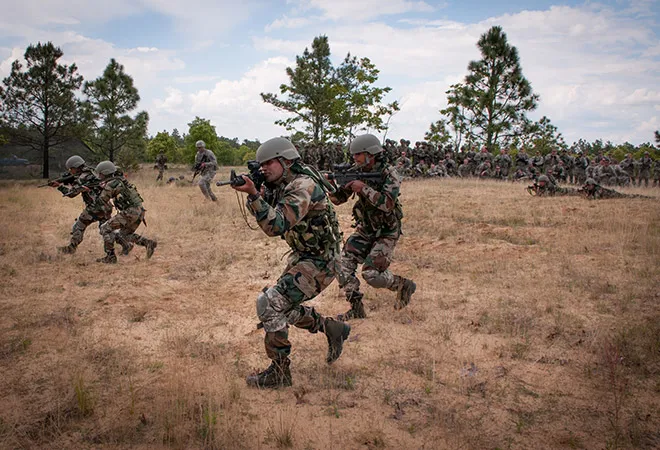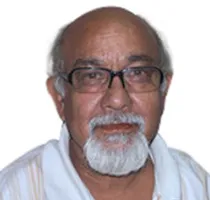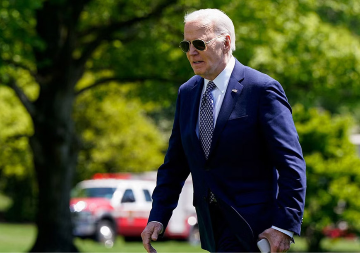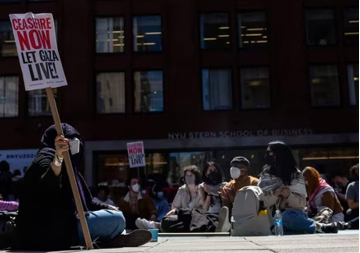
The tragedy enacted at Pulwama in Jammu & Kashmir on 14 February by a Pakistan based terrorist outfit-Jaish-e-Mohammad in which over 40 CRPF personnel died has raised several serious questions that seek a detailed response.
A scrutiny of the Pulwama terrorist attack clearly shows it is undoubtedly a result of serious security lapse along with intelligence failure. Majority of security experts point out to lacunas or holes in the standard operating procedures (SOPs) that is a standard drill followed for a convoy movement. There are other lapses also. A question that rages in thinking minds was that were enough lessons drawn from past attacks on the security forces and the guilty were brought to book or not?
If terrorist attacks at Pathankot and Uri are some of the recent ones, the Mumbai and the attack on Parliament are the others for the government to ready a long-term policy to meet the challenge. Earlier, terrorists have made Red Fort in 2000, J&K legislative assembly in 2001, Akshardham temple in Gujarat in 2003, their target resulting in loss of precious lives.
India has been facing Pakistan sponsored terrorism with Islamabad’s continued focus on Kashmir for more than three decades. There have been different governments belonging to two major national parties in New Delhi.
While the mix of policies has almost been the same with emphasis shifting from one component to the other, depending upon the prevailing ground realities for countering terrorism and militancy in the troubled state, there is a sniff of a new mix of policies in the wake of the Pulwama attack.
Decision for ushering in a new policy of the Prime Minister Narendra Modi led NDA government is political. Therefore, it is necessary to take a close look whether it is a result of well-conceived plan followed by a long-term strategy to deliver desired results of stopping if not totally but at least eliminating the repeat of terrorist attacks in the J&K or at any other site in the country.
Contours of the new policy are emerging with some of its components visible and others yet to unfold. The policy seems to be focusing on isolating the militant and separatist outfits while ignoring disgruntled and angry Kashmiri people, including stone pelting youth. There is no place for a dialogue as the government desires to deal with these elements from a position of strength.
Withdrawal of security to 18 separatist leaders of the All Parties Hurriyat Conference (APHC) along with 155 politicians is one concrete evidence of the unfolding policy. Return of over 4000 Kashmir students and traders from different parts of the country after either direct assault on them, like in Dehradun by youths of Akhil Bharatiya Vidayarthi Parishad (ABVP), or in fear of similar assaults may or may not be the intended fallout of the policy but the Prime Minister’s silence over them is intriguing. A direct consequence of this may add to numbers of disillusioned youth and contribute to further alienation of the Kashmiri people particularly the youth.
It appears that the new approach has drawn heavily from the set of policies, which are in vogue in Israel for dealing with the Palestine problem.
Aggressiveness and muscularity are two important elements of the emerging policy that differentiates itself from the earlier policy that was a mix of soft and hard.
Other components of the policy that may unfold after the return to power of the Modi government after the general elections are abrogation of Article 370 and annulment of Article 35 (a) of the Indian Constitution that accord special status to the state and define permanent residents of the state. It would pave the way for purchase of land and property in the state that would change the demography of the J&K.
In its implementation, security forces, including the paramilitary, have the most significant role with either no or very little contribution from the political establishment.
Majority of the political parties from the State barring the BJP and their leaders have been kept out of the process. There is no indication whether regional and national parties have been taken into confidence.
The external dimension of the policy is to isolate Pakistan and punish it with whatever is at India’s command. After withdrawing of the MFN status to Pakistan and hiking the excise duty on imports to 200 per cent, it was decided to stop Islamabad’s share of river waters flowing there in a clear breach of the Indus Water Treaty between the two countries. India is going to work overtime to expose Pakistan’s complicity and crimes of terror at different global forums and different countries.
In success of any muscular policy, intelligence, particularly from the ground drawn from the inhabitants, is crucial. Over-dependence on the army and police may prove to be detrimental to national interests in the longer haul. While it is highly possible to win smaller battles, the policy without the willing cooperation of the people may result in self- inflicted wounds.
It is an issue of debate whether several of the current steps are being taken with an eye on the coming electoral battle. Opinion is sharply divided over the impact of Pulwama on the coming general elections. It may turn out to be a double- edged sword.
Notwithstanding the electoral outcome, the big question is whether this policy is going to stand the test of times, particularly in the backdrop of the US withdrawal from Afghanistan and the increasing Chinese presence in Central Asia or not. This, only time will reveal.
The views expressed above belong to the author(s). ORF research and analyses now available on Telegram! Click here to access our curated content — blogs, longforms and interviews.




 PREV
PREV


